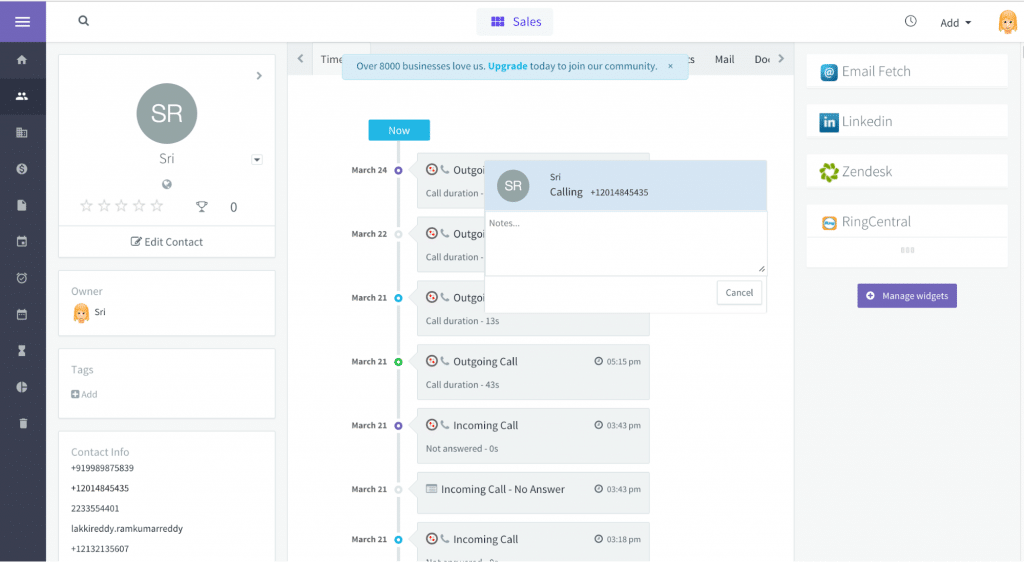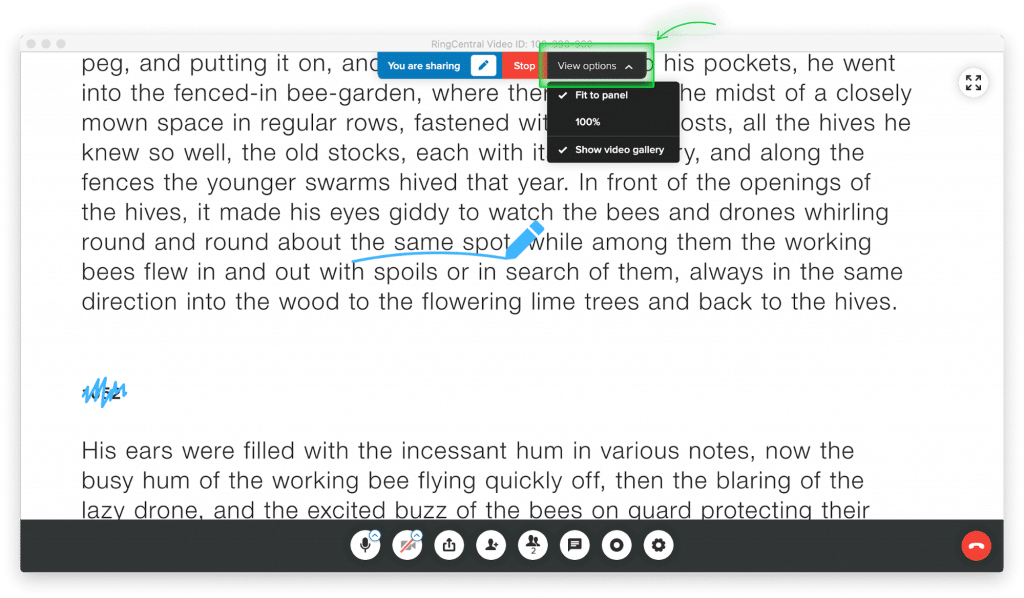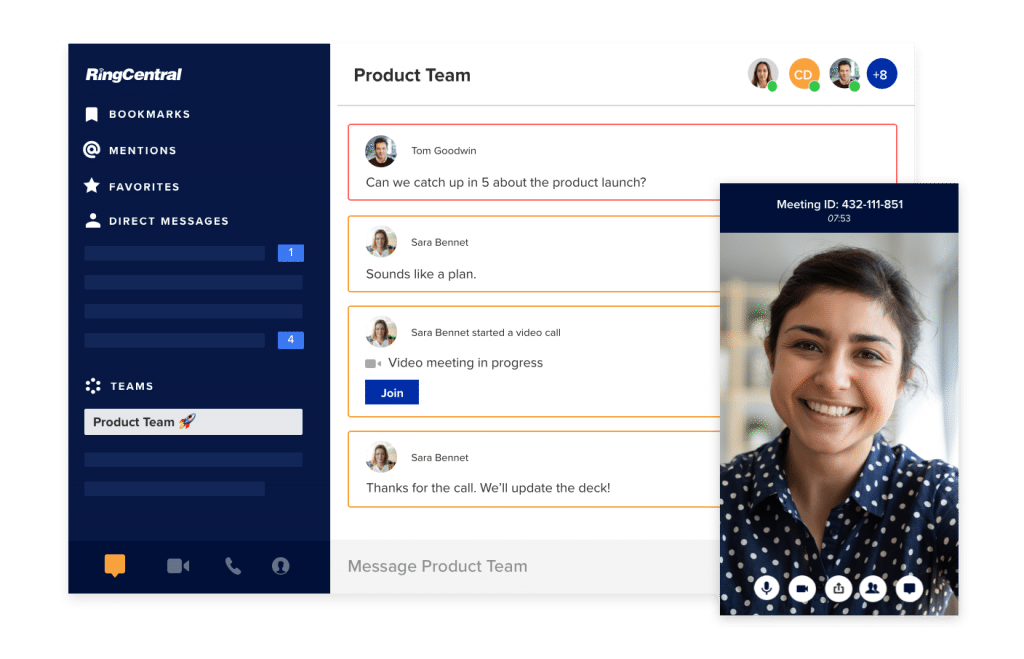There’s an 80% middle ground between the 10% of great sales demos and 10% of sales demos that will fail.
Regardless of effort, accuracy, and optimism, this is the viewpoint of Robert Falcone, co-founder of marketing software Monetate. And he’s right.
How many times have you been on a sales demo and felt underwhelmed?
Actually, it’s a trick question.
You probably don’t remember them—because you were so underwhelmed. You didn’t buy the product, and you forgot all about the demo. We don’t want that.
In this post, we’ll look at:
- What makes a sales demo successful
- 10 sales demo best practices that’ll help you close more deals
- 1. Have a good (and flexible) sales demo script.
- 2. Have a sales demo agenda ready.
- 3. Provide sufficient sales demo training.
- 4. Become a product champion.
- 5. Tailor your sales demo.
- 6. Schedule time before the demo to prep.
- 7. Make sure your sales demo is hands-on.
- 8. Run video sales demos.
- 9. Get creative with Q&A.
- 10. Record your demo for future use.
🚀 Start closing more deals with this free outbound sales playbook.
What makes a sales demo successful
According to a study by Gong.io, successful demos include 12.7% more time talking about the next steps than their unsuccessful counterparts. Meaning you have to let your prospects know what they have to do after the demo is over. Don’t just say goodbye and let them go!
To make sure you’re doing this consistently in your sales demo, you have to spend considerable time planning each demo. Often, this will be 10x the time you actually spend doing the demo.
For example, if your demo is typically an hour long, you might have to spend around 10 hours preparing for the demo. (Of course, you don’t have to do this, but generally speaking, the more prep time you put in, the better.)
Here are a few thing to do as you’re preparing for a sales demo:
- Research the company research. What does your prospect do, and who are their customers?
- Gather requirements. What are the problems they need to solve?
- Understand priorities. What functionality or problem is most important to your prospect?
- Assess the environment. What current products are they using?
- Gauge appetite for change. What are their upcoming projects and timelines?
Once you’ve thoroughly gotten to know your prospect, you can start thinking about optimizing your sales demo.
Next, we’ll walk through 10 best practices to make sure your sales demo stands out against your competition.
10 sales demo best practices that’ll help you close more deals
1. Have a sales demo script
The script should be the core of any sales demo. Whether your sales force is one person or many, your demo needs a consistent message.
But this doesn’t mean you need to recite a script word for word. Far from it, actually.
What you do need to do is make sure that your salespeople are familiar with the flow of your script—like when to introduce the next feature or benefit and when they should speak more quickly or slowly.
Your demo script should take the form of a story. It needs a beginning, a middle, and an end.
The demo should begin with how your solution can solve your prospect’s problem. If you’re selling an email marketing tool, the problem could be that your prospect’s email open rate is low or nobody is buying their product despite sending four emails a month.
In this example, you’d spend time relating to the prospect, their day-to-day activities, what success looks like, and how success is measured. If their major pain point is that they don’t know how well your product is actually performing, you might need to start and spend more time on the analytics or reporting options for your product.
To nail your demo script, develop buyer personas with your marketing and sales teams to establish the most common questions you get from prospects. Once you know the majority of problems your product or service solves, you can best prepare your demo script.
In the world of enterprises and large conglomerates, this would be a single job. However, in more close-knit organizations, everyone should rally together to establish buyer personas.
Your script could look something like this:
- Introductions
- Problems identified
- Company background
- Features that solve your prospects problem
- Product specifics
- Prospect hands-on time
- Q&A
- Wrap up and next steps
When your personas are ready, run through a beginning for each scenario and learn the signals for accelerating your demo. If you’re losing your prospect’s attention, wrap up that section and move onto the next one. If they want to pause and ask questions, let them. This is a sign that they’re interested at this moment in time, which could be the most important part of the demo.
When your demo—and therefore script—is coming to end, make sure you have clear and consistent next steps. This is easily achieved with a bullet-pointed slide. Start with a general next steps slide and build it out as the demo progresses.
2. Have a sales demo agenda ready
The agenda is a crucial part of every meeting—not just sales demos.
Without an agenda, any meeting can spiral out of control quickly. Your agenda should act as a visual aid to your script or story (referenced in step 1).
Begin your demo by going through the agenda, which should:
- Include the prospect’s background and problem(s) you aim to solve
- Address the functionality you’ve specifically called out as most useful for this particular prospect
- Cover what the prospect can get from the specific demo that they won’t get anywhere else
- Conclude with takeaways and next steps
To build your agenda, refer back to your demo script. As you walk prospects through your demo more and more, you can revise and improve your script, agenda, and demo.
Over time, your agenda can become the backbone of your sales demo. However, it’s easy to forget all about it if you only include it at the beginning of your slide deck. To avoid this, simply add the agenda slide at key points of the demo—like after the first feature run-through and before the Q&A.
3. Provide sufficient sales demo training
It goes without saying that you need to be trained to run a good demo. You can’t expect just anybody to join your sales team and demo your product on day one.
If you don’t train your staff or yourself on your product, you won’t be able to run a good demo. The same goes for if you don’t train your team on running the demo itself.
Don’t waste time and resources on bad (or even average) demos. Practice and train regularly.
To make sure you and your team are always ready to present your sales demo at the drop of a hat, there are a few steps you can implement:
- Create a formal training accreditation. New sales staff can only demo your product or services once they are demo certified.
- Do regular training camps or demo recaps. Seasoned sales staff can provide refresher sessions to less experienced salespeople.
- Send fresh hires to new business meetings or invite them to listen into sales calls.
- Use your product as much as possible. The best demos are performed by the people that use the product or service the most.
4. Become a product champion
Being familiar with your sales software is no longer enough. The best sales demos are performed by people who live and breathe your product or service.
These people are your product champions. That doesn’t necessarily mean they know all the technical details—they probably couldn’t create your product from scratch. However, they are the people who use your product day in day out. So much so that the core principles of your sales demo are second nature.
To help your salespeople level up to product champions, there are some things you should do—and some may be things you haven’t thought of:
- Use your tool internally—expect organic product evangelists to appear when your product is central to their working day
- Embrace gamification—have regular quizzes and make a leaderboard for product knowledge (not just for sales figures)
- See if you can beat your best score over time—especially if you are a solopreneur.
- Take turns presenting internally—at sales meetings, at your company all hands, whenever there is an opportunity
- Present to people outside your business that aren’t customers—friends, former colleagues, and mentors
- Be seen as a product champion—talk about your product in a blog and on social media and establish an online presence to provoke questions that will improve your demo
Once you implement even some of these, your salespeople will have taken the first step to becoming product champions.
5. Tailor your sales demo
You know that your demo script and agenda have to be tailored to your prospect (see steps 1 and 2).
When it comes to the actual demo of your product, this must also be tailored to your prospect as much as possible.
Let’s say you’re doing a demo of your email marketing platform product. When you’re showing the dashboard, make sure you’re using your prospect’s name and their company’s name so that they can see your product as if they’re already using it. Don’t make them work so hard to imagine being your customer—show them what it looks like so they can visualize it off the bat.
Here’s a simple checklist that’ll save you time (and potential embarrassment) later down the line:
- Spell check any names or brands you use that aren’t included in your core demo.
- Use the prospect’s brand logo to make the demo feel more familiar.
- Give the prospect a head’s up that you’re using their names and logo (sometimes this can come as a shock if they aren’t in the loop).
- Be familiar with other popular apps that your product can integrate with—for example, RingCentral can integrate with CRMs to provide one-click calling:

RingCentral integrates with Agile CRM so that you can call prospects right from your screen.
- Check the technical requirements—whether you’re traveling to a prospect’s offices or not, make sure you have sufficient bandwidth and a screen large enough to demo on.
When you’ve checked off these items, it’s time to populate your demo.
If your product is full of data when used in real time, make sure there is data in your demo. Rather than having blank boxes, prepare a mock version so the prospect can see what they will be working with.
If you have a product marketing team, this is something you should speak to them about. The success of their portfolio is reliant on you being empowered by their tools.
If you don’t have that luxury, come together as a sales unit and develop a demo environment for your agreed personas.
6. Schedule time before the demo
You’ve thoroughly prepared and the time has come to start your five-star demo—but you’ve been locked out of your account!
Or maybe the internet has gone down or someone vital to the presentation isn’t at their desk.
Sound familiar?
Scheduling time for a pre-demo check is crucial for the success of the best sales demos. Rushing into a demo without checking if everything is in order is the equivalent of a pilot skipping their pre-flight checks.
Make it standard practice to meet half an hour before (or longer if needed) and run through your own pre-flight checks. It may be useful to have a checklist for this too. Here are a few things to look for:
- Internet connection is sufficient
- Meeting room is free/booked
- Demo logins and passwords work as expected
- Battery has plenty of power/charger is packed
- Participants know the agenda
- Latest news and talking points about your prospect are up to date
If you find this is all in order and you don’t need the full half hour, it might be tempting to shorten your pre-flight checks. Use this time to rehearse, chat, and mentally prepare.
7. Make sure your sales demo is hands-on
A demo where you read off slides and present functionality isn’t only boring for you, it’s also boring for your prospect. The easiest way to keep them engaged? Have them do the demo themselves.
This may not be possible for every element of your product, but it should be possible for a lot of it. If your prospect asks to try something out for themselves, you must be prepared to say yes and explain how to complete that task.
To go a step further, you can invite your prospect to participate. Language and phrases like “would you like to try” or “now I’d like to ask you to show me how to do this” both engage your prospect and encourage them to ask questions. If they can’t complete the task, then your expertise is the remedy to their problem.
One step even further is to ask your prospect to run the entire demo. If you do choose this route though, this will need to be planned from day one and thoroughly rehearsed. While the best script and agenda can help you steer a meeting, when you put the prospect in control, your improvisation skills can be tested.
Your goal here is to get them involved so they instantly become familiar with the look and feel so they feel empowered to be a power-user and a point of reference for your product within their own company. If you can get a power-user on side, you are one step closer to closing a deal.
If you’re using a more aggressive approach like this, be aware of other people involved in the demo. Winning over a power-user is only one person in a company of many individuals and departments.
8. Run video sales demos
Aside from generic video conferencing benefits (less travel time for you, a green alternative to physical meetings, immersive functionality like screen sharing and HD video), running your sales demo online gives you lots of unique ways to communicate and collaborate if you need help while on a demo.
For example, RingCentral Video lets you run sales demos and invite prospects to join from a web browser using a link. You can even have your call while communicating with the rest of your team in the background if you need clarification from your manager or have a question that needs to be answered right away:
Here are a few of the main perks of running a sales demo via video:
- Face-to-face communication without the commute
- You can reach a wider audience in multiple locations
- Prospects can share their own screen when they have questions
- Anyone can join from mobile devices even when they’re on the go
- It can be recorded and turned into a training video for new hires and other sales reps
9. Get creative with Q&A
When prospects have questions, you know your demo has pushed the right buttons.
But rather than just answering the questions, you should use this opportunity to document the questions and provide clear step-by-step instructions right on the screen:

In RingCentral Video, you can share your screen and add annotations too.
Show the functionality in action, take a screenshot, and document a follow-up on your next-steps slide.
Always send a sales demo follow-up email with next steps, actionable items, and a clear call to action. You can also use this as an opportunity to share articles and links to case studies of relevant customers who’ve benefited from using your product.
10. Record your demo for future use
Every sales demo you conduct should be recorded—either for the purpose of sending to the prospect to recap your demo or for training purposes for future demos. Save the best sales demos to highlight things done well and the less great demos to document lessons learned.
If your demo is face-to-face, this could be tricky to facilitate when you have limited time to set up a camera. With video meetings, you can enable recording with the click of a button.
Once you’ve recorded your meeting, you can use online editing software like Lightworks or Hitfilm Express to remove pauses and anything that shouldn’t be shared.
The edited recording can then be used for marketing purposes like sharing demos on your website or YouTube page.
Start running better sales demos
Once you’ve applied these best practices for running sales demos, you’ll be well on the way to outperforming your competitors.
When in-person meetings are required or achievable, video meetings have historically been seen as the next best option.
The reality in 2020 is that video meetings are becoming more popular than in-person meetings because they’re more efficient, video quality in general has gotten a lot better, and there are more useful features being built out on video meeting platforms.
Want to run seamless video demos anytime and anywhere? Check out RingCentral Video!
Originally published Feb 01, 2020, updated Dec 30, 2022





